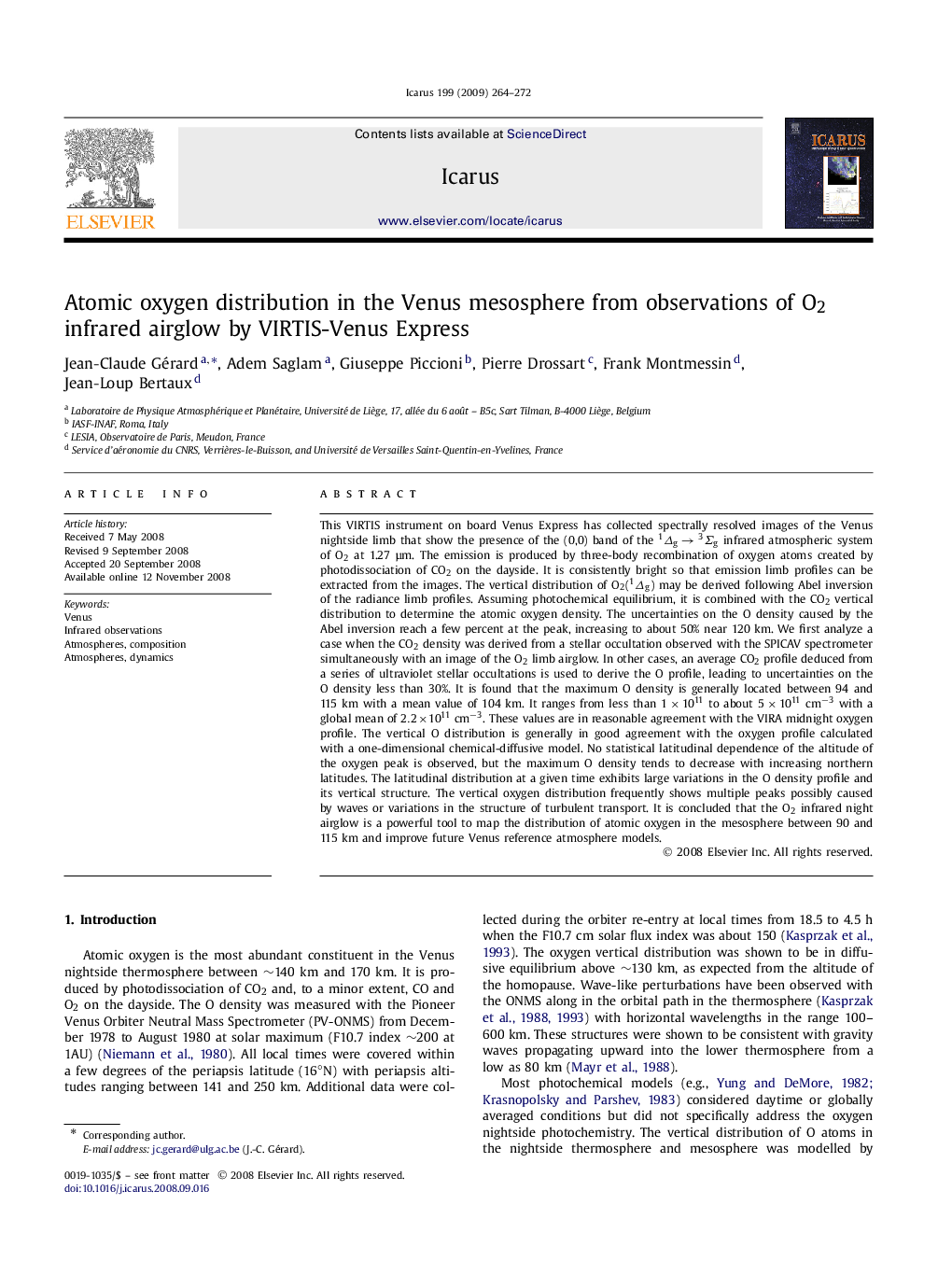| Article ID | Journal | Published Year | Pages | File Type |
|---|---|---|---|---|
| 1775528 | Icarus | 2009 | 9 Pages |
This VIRTIS instrument on board Venus Express has collected spectrally resolved images of the Venus nightside limb that show the presence of the (0,0) band of the Δg1→Σg3 infrared atmospheric system of O2 at 1.27 μm. The emission is produced by three-body recombination of oxygen atoms created by photodissociation of CO2 on the dayside. It is consistently bright so that emission limb profiles can be extracted from the images. The vertical distribution of O2(Δg1) may be derived following Abel inversion of the radiance limb profiles. Assuming photochemical equilibrium, it is combined with the CO2 vertical distribution to determine the atomic oxygen density. The uncertainties on the O density caused by the Abel inversion reach a few percent at the peak, increasing to about 50% near 120 km. We first analyze a case when the CO2 density was derived from a stellar occultation observed with the SPICAV spectrometer simultaneously with an image of the O2 limb airglow. In other cases, an average CO2 profile deduced from a series of ultraviolet stellar occultations is used to derive the O profile, leading to uncertainties on the O density less than 30%. It is found that the maximum O density is generally located between 94 and 115 km with a mean value of 104 km. It ranges from less than 1×10111×1011 to about 5×1011 cm−35×1011 cm−3 with a global mean of 2.2×1011 cm−32.2×1011 cm−3. These values are in reasonable agreement with the VIRA midnight oxygen profile. The vertical O distribution is generally in good agreement with the oxygen profile calculated with a one-dimensional chemical-diffusive model. No statistical latitudinal dependence of the altitude of the oxygen peak is observed, but the maximum O density tends to decrease with increasing northern latitudes. The latitudinal distribution at a given time exhibits large variations in the O density profile and its vertical structure. The vertical oxygen distribution frequently shows multiple peaks possibly caused by waves or variations in the structure of turbulent transport. It is concluded that the O2 infrared night airglow is a powerful tool to map the distribution of atomic oxygen in the mesosphere between 90 and 115 km and improve future Venus reference atmosphere models.
